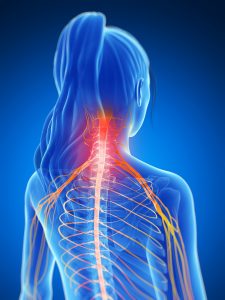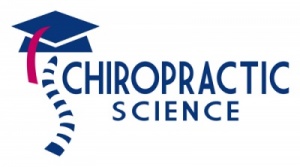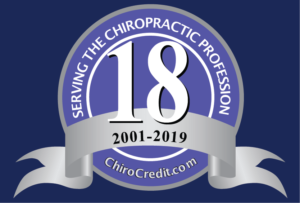 The application of spinal manipulative therapy (SMT) is a cost-effective and widely recognized manual intervention used by a variety of health care professionals in the management of musculoskeletal pain. A growing body of scientific evidence supports the use of SMT for the treatment of a broad range of musculoskeletal disorders citing short-term antinociceptive (pain-relieving) effects and restoration of normal joint mechanics.
The application of spinal manipulative therapy (SMT) is a cost-effective and widely recognized manual intervention used by a variety of health care professionals in the management of musculoskeletal pain. A growing body of scientific evidence supports the use of SMT for the treatment of a broad range of musculoskeletal disorders citing short-term antinociceptive (pain-relieving) effects and restoration of normal joint mechanics.
Last year, about this time, I wrote about a systematic review that found spinal manipulation therapy (SMT) has a pain reducing effect as measured by pressure pain thresholds (PPT). Additionally, the effect of SMT on pain reduction was statistically significant at remote locations (for example, adjusting the neck yielded reduction in pain at the elbow).
A new study has emerged in the scientific literature that advances our understanding of the topic (Srbely et al, 2013). The authors note that although the pathophysiology of myofascial pain syndrome (MPS) is still unclear, research suggests that myofascial trigger points (MTPs) play an fundamental role in the generation and clinical manifestation of MPS. However, it is currently unknown if the antinociceptive effects of SMT in myofascial tissues are manifest predominantly via regional or general mechanisms, or a combination of both. A study was needed to specifically investigate the hypothesis that SMT evokes robust antinociceptive effects in MTPs preferentially located within neurosegmentally linked myofascial tissues.
Srbely et al conducted the study through the University of Guelph. The study was a single session, single blinded, randomized controlled intervention. The primary inclusion criterion was the presence of a clinically identifiable MTP locus (active or latent) within the right infraspinatus and right gluteus medius muscles. The primary diagnostic criterion used to clinically identify the trigger point locus was ‘a palpable hyperirritable nodule nested within a taut band of skeletal muscle; sustained ischemic pressure over the trigger point locus elicited a dull achy regional pain or discomfort.’ Exclusion criteria encompassed conditions that would affect normal somatosensory processing.
Thirty-six participants qualified for the study and were randomly assigned to test or control groups. Two chiropractors saw participants at an urban outpatient clinic. One chiropractor performed the history, exam and manipulations while the other chiropractor (blinded to treatment allocation) detected the trigger points and measured all PPTs. The primary outcome was PPT values from infraspinatus and gluteus medius muscles. The infraspinatus was chosen due to its innervation from the manipulated segment (C5-6). The gluteus medius acted as a regional control point (L4-S1 innervation).
PPT was measured with a force gauge (Newtons) over the trigger point locus (infraspinatus, gluteus medius) and was defined as the force necessary to elicit the onset of a deep dull achy local discomfort and/or referred pain. Measurements were taken at 1,5, 10, and 15 minutes postintervention. In order to specifically compare regional antinociceptive effects between intervention groups, the authors also calculated the PPT difference (PPTdiff) between infraspinatus and gluteus medius trigger points at each time interval within each participant. Participants received a rotary type manipulation to the C5-6 segment in a supine posture. Additionally, a drop piece mechanism was used to aid in the high velocity low amplitude thrust. Control participants received a sham manipulation. The sham consisted of rotating the neck of the participant, supporting the neck of the participant with the clinician’s forearm under the headpiece and a thrust of the forearm into the headpiece. It is noted that the contact hand did not thrust and did not create ‘a real manipulation’ of any segment.
Results:
- there was a significantly increased PPT threshold for infraspinatus trigger points in treated participants compared to controls at all time intervals beyond baseline
- there was a significantly increased PPT threshold for infraspinatus compared to gluteus medius before and after manipulation at all time intervals beyond baseline
- no significant differences in PPT scores were observed at any time interval when comparing test gluteus medius, control infraspinatus, and control gluteus medius groups
- there were significant increases in PPTdiff in the test group vs controls at all time intervals beyond baseline
Key Findings:
- This study suggests that SMT evokes statistically significant short-term increases in PPT in segmentally related myofascial tissues in young adults
- Decreased pressure sensitivity (increased PPT score) was observed at all time intervals beyond baseline within neurologically linked infraspinatus muscle after real, but not sham, manipulation
- The peak antinociceptive effect was measured as a 36% decrease in pressure sensitivity from baseline values and was recorded at 5 minutes postSMT
So, what does this study tell us? It suggests that SMT evokes robust regional antinociceptive effects in myofascial tissues. It also provides important evidence to support further research into the potential benefit and role of SMT in the management of chronic widespread pain syndromes including myofascial pain, and fibromyalgia.


